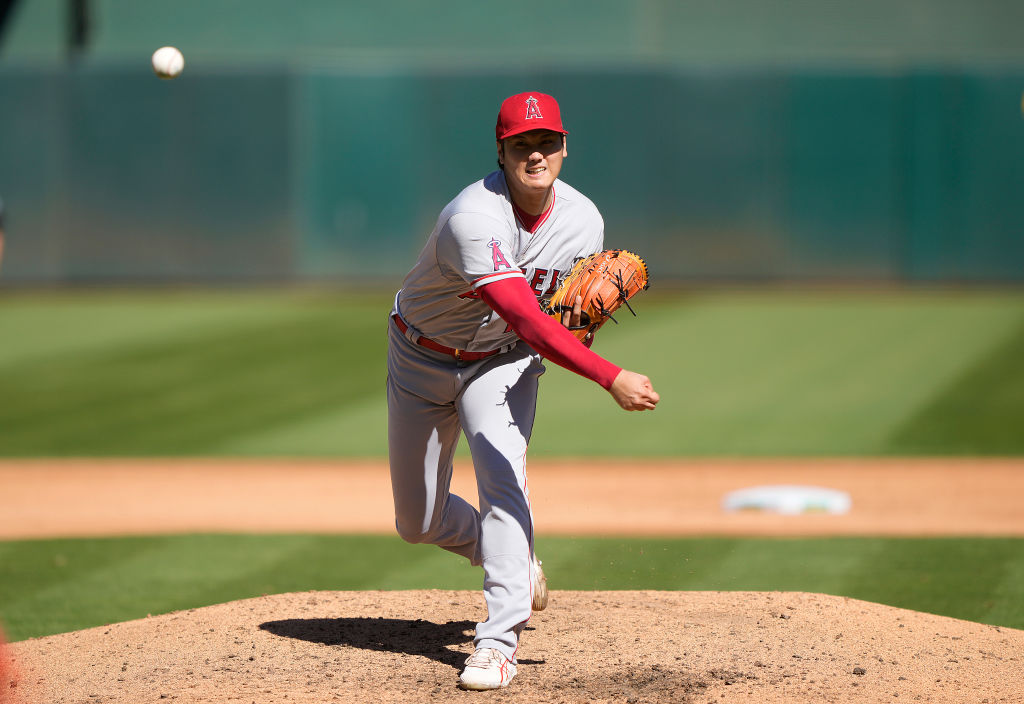America’s pastime is suffering a crisis of confidence. With viewership and ballpark attendance trending down since the juicing days of the early aughts and with concerns over the popularity of the NFL and the NBA, the league has decided to enact a number of sweeping changes in an attempt to give the fans, in the words of MLB commissioner Rob Manfred, “the kind of game that they want to see.”
The idea is to give fans shorter games with more offense. But the rule changes demonstrate MLB’s imperfect understanding of its own game.
Sure, baseball needed a tuneup. Game times have risen from 2.5 hours to longer than 3 hours in 2021. Minor rule changes —like the three-batter minimum for relief pitchers—attempted to address the problem, but games kept getting longer.
Now pitchers have a 15-second pitch clock starting when they receive the ball, 20 seconds with a runner on base. Hitters have to be “alert to the pitcher” with 8 seconds left on the pitch clock.
In one respect it’s working: Games are back down to the 2.5 hour mark in spring training. But it’s antithetical to the spirit of baseball. Baseball shouldn’t be a timed game. As the great Orioles manager Earl Weaver once said, “In baseball, you can’t kill the clock. You’ve got to give the other man his chance. That’s why this is the greatest game.”
And we’ve already seen how disruptive the clock can be.
On opening day of spring training, Cal Conley of the Atlanta Braves faced a 3-2 count with the bases loaded with the game tied in the bottom of the ninth—every kid’s backyard fantasy. With 8 seconds left on the pitch clock, Conley had both feet in the batter’s box but wasn’t looking at the pitcher. Strike three, game over.
Welcome to your new and improved MLB.
If the only goal was to pick up the pace of the game, that might be fine, even at the cost of baseball’s purity. But Manfred’s emphasis on pace of play is designed to distract our attention from baseball’s real problem: Major league hitters aren’t hitting major league pitching.
In 2022, the major leagues had their worst offensive output since the league lowered the pitching mound in 1968. The league batting average is down 26 points from the 2006 mark, and on-base percentage is down 25. Hitters are striking out almost 30 percent more.
It’s no real mystery why, either. Pitching has just gotten way, way better.
When sports analytics tools like Rapsodo were introduced to baseball about a decade ago, pitching took a great leap forward. Now pitchers are able to track the spin rate and spin efficiency of their pitches, making it much easier to quantify the quality of a pitch and adjust accordingly. Spin rate is measured in rotations per minute (RPM), and in 2022, even after the banning of foreign substances, the league average RPM was up 5 percent from 2015, the year they started keeping track.
The result is the ungodly filth that major league hitters are expected to hit day in and day out. It’s not just the velocity of pitches that’s improved, but with tighter, more efficient spin comes a lot more movement. Take a second to watch Blake Treinen pitch and you’ll see what I’m talking about.
This is a much trickier problem to solve than pace of play. And no one wants to admit it, which is why Manfred and league officials are offering excuses other than “generating more offense” for the other rule changes.
Take the enlargement of the bases. In 2023, bases will be 18 inches square, up from 15. The main rationale, according to the MLB, is player safety.
What the MLB wants is to make it easier to steal bases. Larger bags mean shorter distances between bases. If that wasn’t the goal, why limit pickoff attempts to two throws per at-bat? (The pitcher already has to make those within the time limit of the pitch clock.) So it’s now both harder for pitchers to hold runners on and easier for runners to steal bases.
Then there is the ban on the defensive shift. Infield shifting—putting three infielders on the same side of second base—had become rampant over the last decade. In the 2013 regular season, the league saw 6,882 shifts. In 2021, that number was almost 60,000. Naturally, as the analytics predicted, this led to fewer base hits.
Cut out shifting, and baseball becomes a whole new game. Left-handed power bats like Corey Seager, who hit into the shift 123 times last year, could see up to 20 more base hits this year. It may not sound like much, but that would have increased his batting average from .245 last year to a much more impressive .278.
The rationale behind the shift ban is obvious, even if the league claims that a primary reason for the ban is to showcase the athleticism of its infielders. But we shouldn’t be punishing teams that rely on analytics. Superior analytics are what allows small-market teams like the Tampa Bay Rays to compete with and beat teams like the New York Yankees with their high-priced sluggers. It may not look as exciting when a batter hits a bullet up the middle right into the glove of a shifted shortstop, but it is superior gamesmanship.
More importantly, is it so much to ask hitters to adjust? Baseball is about constant adjustment. I’m willing to bet that if Kyle Schwarber, who was shifted against in 91 percent of his at bats last year, simply learned to bunt down the third base line, he’d end up finding a lot more green grass up the middle by the end of the year.
Finally, we have the ghost-runner rule, Manfred’s most notorious bastardization of the game. The rule places a base runner at second base to begin every extra-inning frame. Initially adopted during the COVID-shortened 2020 season, it was introduced to spare the arms of pitchers in the 60-game sprint to the playoffs. The purported explanation was that too many games were going deep into extra innings, and the league couldn’t afford overtaxed arms late in the season. In reality, the rule is there to keep extra innings to a minimum. Apparently fans can’t be asked to sit through more than a couple innings of sudden death baseball.
Above all others, this rule is the furthest deviation from the national pastime. Once a game hits extra innings, it’s no longer baseball. As Joe Morgan said in Moneyball, “You have to steal, you have to bunt, you have to sacrifice, you gotta get men in scoring position and then you gotta bring ’em in.” Not in extra inning games. A bunt and a sacrifice fly—or just a bloop single–can win you a ballgame.
Except not in the playoffs. Because the MLB thinks it would be silly to decide important games like this.
Baseball is not exciting in the same way as football and basketball. It’s a different type of athleticism on display and there’s a different nuance to the game. Guys might not be jumping over the heads of their competitors or running 4.4 40-yard dashes, but there is plenty of drama in the one-on-one battles between pitcher and hitter and the strategic decisions made by managers. We are experiencing a period of incredible pitching, and instead of embracing it we’ve chosen to nerf it.
The bottom line is that if you don’t enjoy baseball without the ghost-runner, you don’t enjoy baseball.
In the 1960s, when the game was experiencing a similar offensive drought, all that MLB did was lower the mound. That didn’t change the essence of the game. And lest we forget, as guys like Aaron Judge have shown, it is actually still possible to hit major league pitching.
Baseball should’ve done what it’s always done and patiently waited for everyone else to catch up.






Please note that we at The Dispatch hold ourselves, our work, and our commenters to a higher standard than other places on the internet. We welcome comments that foster genuine debate or discussion—including comments critical of us or our work—but responses that include ad hominem attacks on fellow Dispatch members or are intended to stoke fear and anger may be moderated.
With your membership, you only have the ability to comment on The Morning Dispatch articles. Consider upgrading to join the conversation everywhere.